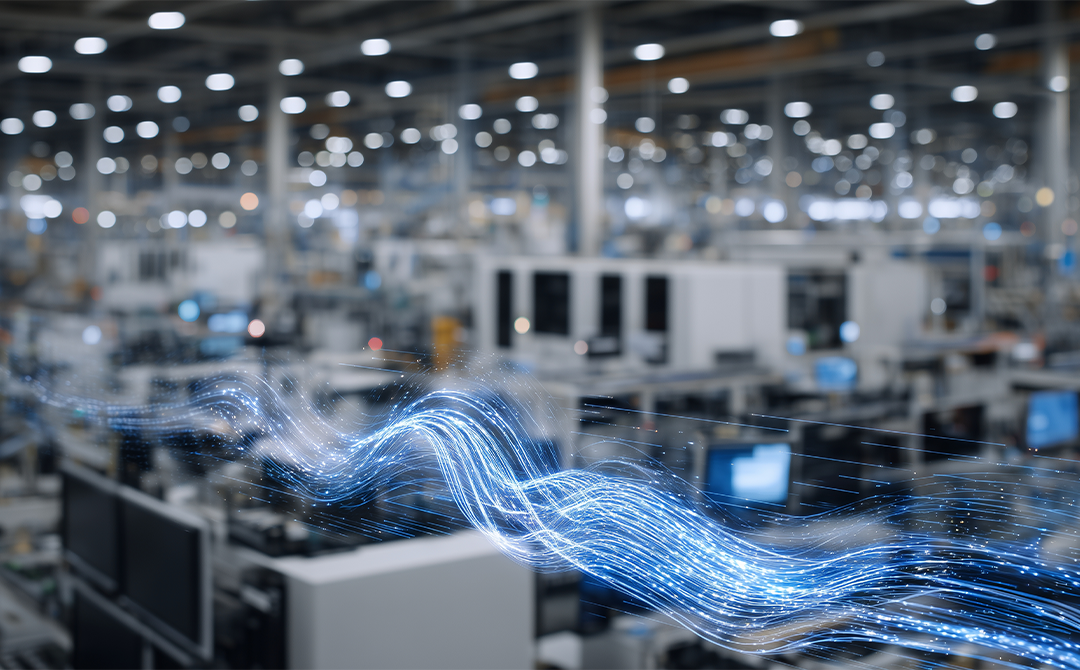
A banking app uses a large language model (LLM) to provide real-time customer support via a virtual assistant. The LLM's performance is robust, but the latency during inference is high, leading to slower response times, which affects user experience.
The team optimizes the inference phase by reducing the precision of the model’s weights and activations, shifts the inference process to specialized hardware such as Tensor Processing Units (TPUs), and uses batch processing of requests rather than individual processing.
The end result? The optimizations make the virtual assistant more efficient and user-friendly, enhancing customer satisfaction and engagement.
This is known as LLM Inference Optimization - an essential part of the practical application of LLMs in demanding, scaled, real-world scenarios.
What is LLM Inference?
It is the process by which an LLM generates human-like text to respond to a user query. It comprises two phases:
In the prefill phase, user inputs are converted into tokens for specific words or parts of words. The model then works with numerical values converted from the tokens.
In the decode phase, the model responds to the user prompt by processing the next token based on training and context. It repeats this until the human-like response is completed.
What is LLM Inference Optimization?
LLMs have grown powerful but with high computational overhead. This is a challenge for applications like customer support and trading platforms that need responsive, real-time performance. LLM inference optimization boosts efficiency and cost-effectiveness so these models can feasibly deliver inferences in production.
Importance of LLM Inference Optimization
Businesses that invest in LLM inference optimization will reap the following benefits:
- The LLMs will support more users with faster, tailored responses
- By optimizing and reducing computational resources, operational costs are drastically reduced
- Reducing the strain on infrastructure extends the hardware lifespan
- Lower energy consumption will contribute to greener and more sustainable AI operations.
Concepts Within LLM Inference Optimization
There are a variety of concepts that are designed to improve the speed, scalability, and efficiency of LLM inference. These concepts ensure that the AI models infer faster at lower costs, with fewer computational resources, and at a lower latency. Let’s look at some of the key concepts within LLM inference optimization.
Quantization:
It is a compression (read optimization) technique that reduces the computational burden while increasing the LLM’s inference speed. Most LLMs operate using 32-bit floating-point precision. Quantization reduces this to 16-bit or 8-bit integers. This reduces memory usage, and improves inference speed, without a noticeable loss in model accuracy.
Typically the model is quantized after training (Post-Training quantization) and then fine-tuned (Quantization Aware Training).
Knowledge Distillation:
In this process, knowledge transfer is done from a larger and more complex model (teacher) to a smaller and more efficient model (student). The smaller model speeds up inference and lowers resource consumption while retaining the complexity of the larger model.
- White box knowledge distillation - Where the student model has access to the inner workings of the teacher model.
- Black box knowledge distillation - The student model learns from the teacher but is not aware of how the teacher works.
Pruning:
It involves eliminating neurons, connections, and unimportant weights in the model that do not contribute significantly to performance. In turn, the model becomes smaller and faster, while retaining its performance edge.
Structured pruning removes larger parts of the network such as neurons. This can change the model network. Unstructured pruning eliminates parameter weights so the model network does not change.
Dynamic Batching:
It combines multiple text generation requests into a single batch. Instead of individual request handling, they are handled as a batch by the efficient parallel processing capabilities of GPUs or TPUs. This means increased throughput, improved resource utilization, and cost efficiency, and the technique is ideal for situations where large volumes of text generation are needed.
Speculative decoding:
This is an inference technique that uses a smaller, less powerful, but faster language model called the draft model to generate candidate tokens. These candidate tokens are then validated by the larger, more powerful, but slower target model. This is faster than auto-regressive token generation, and allows the larger target model to focus on verification and inference, which.
|
Speculative decoding has proven to be an effective technique for faster and cheaper inference from LLMs without compromising quality. It has also proven to be an effective paradigm for a range of optimization techniques. |
Here, instead of a single processing unit handling the entire model, it is distributed across multiple processing units. It speeds up inference and is useful for large models. It results in better resource utilization and improved scalability.
Pipeline Parallelism:
It distributes the various layers of a model (including inference) across multiple devices. This means you don't need to invest in or deploy expensive high-memory devices to run large models.
For example, a retail chain running LLMs across thousands of stores might use pipeline parallelism to run their large pricing models on less expensive hardware spread across stores.
FlashAttention:
FlashAttention is an optimized version of the computationally intensive attention mechanism used in transformer models, commonly found in LLMs. It enhances memory access patterns and removes redundant calculations from the attention process. This results in faster inference times and reduced memory usage, delivering considerable savings in large-scale deployments.
Edge Model Compression:
It compresses large models to be small enough to run on edge devices like smartphones, IoT devices, or other hardware that have limited computing power. Techniques like quantization, weight sharing, and low-rank approximation ensure model performance in the new environment.
Note: while inference optimization is a practical necessity, it is important to keep in mind that these techniques come with accuracy trade-offs, and may incorporate user subjectivity into the model during the optimization process.
LLM Inference Optimization Benefits
Companies that use large language models gain significantly from LLM inference optimization. Let’s look at some of them.
Reduced Operational Costs:
The main reason behind the high costs of LLMs is because of the substantial computational resources that it uses. Inference optimization reduces the following:
- Cloud costs: Typically, cloud providers charge by usage. By reducing the length of compute instances, inference optimization drives down this spend.
- Energy consumption: Inference optimization reduces energy needs, making the LLM more eco-friendly
- Infrastructure optimization: It allows for efficient use of the available hardware
Faster Response Time:
Imagine a customer or stakeholder waiting for several minutes after they submit a complex query on one of your digital channels. They will find this irritating and even distressing, especially if the concern is related to critical matters like medical care or disaster response.
Optimizing inference lowers latency and ensures the model serves faster, significantly improving the response times and eliminating user friction.
Improved Scalability:
Applications that have to scale user bases rapidly for profitability, such as an ecommerce platform or a social media app, will be constrained by non-streamlined inference. Inference optimization, which reduces the resources the LLM uses, equips the model to handle innumerable simultaneous users at once, enabling the necessary scalability.
Better Personalization:
The modern customer is not looking for speed alone but personalization as well. Techniques like knowledge distillation and pipeline parallelism help LLMs deliver these more contextualized, customized interactions at the same speed if not faster than non-optimized models, vastly enhancing user satisfaction.
Extending Reach:
Inference-optimized LLMs, by their streamlined use of resources, can deliver value in a broader range of environments:
- Edge devices: LLMs can operate on Smartphones and IoT devices for real-time, localized inference, reducing dependence on centralized cloud servers
- Resource-constrained environments: It allows AI solutions to run in low-power settings without sacrificing performance
- On-premises hardware: Businesses that have privacy concerns can run their models on dedicated servers.
What did Apple do for their Apple Intelligence model that helps with users’ daily tasks?
Source: Introducing Apple’s On-Device and Server Foundation Models - Apple Machine Learning Research. |
Challenges Of LLM Inference Optimization
From algorithmic trade-offs, balancing between cost and efficiency, to hardware limitations, optimizing LLM inference comes with many challenges.
High Computational Costs:
High-end GPUs, TPUs, or specialized accelerators are necessary for LLM inference optimization. They can be expensive, especially when you run them at scale. Even cloud deployments might result in high costs due to continuous GPU/TPU usage.
Accuracy Issues:
Even though batch processing improves inference latency, you might have to consent to a trade-off with accuracy. This impacts the quality of the model’s output and hence user satisfaction.
Data Transfer and System Compatibility:
Take the case of tensor parallelism which distributes computations across multiple GPUs or accelerators. One of the major challenges here is communication overhead since frequent data transfers between computing units result in latency, reducing efficiency. Since different GPUs and TPUs have varying capabilities, hardware compatibility issues might also arise.
Process Of Optimizing LLM Inference:
Here is a systematic step-by-step approach to help you optimize inference for LLMs across your business.
Model Analysis:
Learn the nuances of how the foundational model, such as GPT, Gemini, or LLama, makes inferences, utilizes resources in different environments, and scales. This provides a strong base.
Performance Profiling:
Now that you know your model in and out, turn your attention to performance. Identify bottlenecks and establish a baseline for metrics such as inference speed and latency. Analyze memory consumption patterns and computational resource usage for your use cases to prioritize the areas of improvement.
|
Important Metrics
Source: LLM Inference Performance Engineering: Best Practices | Databricks Blog |
Develop your Strategy:
With a thorough understanding of the model's current nature and performance, you can now
select optimization techniques. The choice of methods depends on the specific needs of the use case. Trade-offs between optimization approaches are made, and an implementation strategy is developed.
Implement:
The selected methods are applied to improve performance. During this phase, all changes and configurations are documented to ensure reproducibility and consistency.
Test and Validate:
The impact of optimization on model performance is measured by comparing the results against the baseline metrics in testbed scenarios. Also, it is important to verify that the improvements have not compromised the model's accuracy.
Deployment and Monitoring:
Once deployed, the optimized model's performance is closely monitored, and feedback collected for future improvements. Continuous tracking ensures that the optimizations are tweaked to remain efficient and effective over the long term.
Techniques For Improving LLM Inference Optimization
So far, we have talked about working with the model to optimize inference. But this will succeed only when we optimize the hardware and other factors that also drive the LLM. Here is a quick look at how we can do that.
Hardware Acceleration:
For large language models (LLMs), GPUs, TPUs, and custom AI accelerators are transformative. These devices are designed to manage the heavy computational needs of LLMs, enabling much quicker inference by leveraging their ability to process tasks in parallel.
Memory Optimization:
Working with large models means memory management is key. By using methods like gradient checkpointing or mixed precision training, you can cut down the memory usage. This makes it possible for even the most resource-heavy models to run without a hitch.
Energy Efficiency:
Power usage can’t be ignored, especially for large-scale deployments. Consider adjusting the power draw of processors using dynamic voltage and frequency scaling. This smart energy management keeps LLMs running efficiently with optimum energy consumption.
Load Balancing:
Distributing workloads efficiently is a must in busy environments. With good load balancing, servers stay clear of overloads, and users get a smooth, uninterrupted experience—even during peak times.
Network Optimization:
For cloud-based LLMs, the speed of the network is a defining factor. Optimizing network protocols and reducing latency between servers will lead to faster responses and a smoother user experience.
Caching and Preloading:
A well-known technique in interactive software, caching frequently accessed outputs can help quickly retrieve information eliminating redundant processing. Preloading oft-used data into memory further reduces process times.
For instance, the Research and Development (R&D) department of a Fast-Moving Consumer Goods (FMCG) manufacturing company, can use KV (Key-Value) Caching to accelerate product development.
As the LLM processes product simulations, it stores key-value pairs representing intermediate computations (e.g.effectiveness of ingredient concentrations). These can.be used to evaluate each new formulation faster, speeding up innovation.
LLM Inference Optimization Checklist
Here is how you can measure your LLM inference optimization journey from different perspectives.
Model Perspective:
- Has the model architecture been analyzed for complexity and efficiency?
- Are the slowest components of the model's inference pipeline identified?
- Can the model scale efficiently with increased load?
Performance Perspective:
- Baseline Metrics: Have initial metrics for speed, latency, and throughput been recorded?
- Resource Utilization: Is the model's use of memory, CPU, and GPU resources optimal?
- Latency Sensitivity: Is the model responsive enough for real-time applications?
Technical Perspective:
- Optimization Techniques: Has an appropriate suite of methods like pruning, quantization, or knowledge distillation been selected?
- Hardware Utilization: Have you identified the best combination of specialized hardware resources (e.g., GPUs, TPUs)?
- Software Tools: Are profiling and monitoring tools deployed to track performance?
Business Perspective:
- User Experience: Is the optimized model delivering the improved response times and reliability that makes users happy?
- ROI Justification: Is the return on investment in optimization measurable and justifiable?
Operational Perspective:
- Implementation Plan: Is there a clear plan for applying and testing optimization techniques?
- Monitoring Framework: Are systems in place to continuously monitor model performance post-deployment?
Strategic Perspective:
- Long-Term Scalability: Are the optimization techniques scalable to future use cases and model upgrades?
- Continuous Improvement: Is there a strategy for ongoing performance enhancement and adapting to new technologies?
- Compliance and Standards: Does the optimized model comply with regulatory frameworks, industry standards and best practices?
Team Perspective:
- Does the team have the expertise required to implement and maintain optimizations?
- Are cross-functional teams (data scientists, engineers, product managers) aligned in the optimization goals?
- Is thorough documentation maintained for knowledge transfer and reproducibility?
LLM Inference Optimization Examples
- A large ecommerce company deploys an AI-powered customer support chatbot that handles thousands of inquiries every day. It leads to high latency, causing delays in response times and frustrating customers. The company implements the following:
- Quantizes the model to reduce its size
- Implements batching to handle multiple requests simultaneously
- Uses low-latency inference engines.
With this, the company reduces inference time by a huge margin and delivers faster smoother support experiences.
- A leading FMCG manufacturer leverages a large language model (LLM) to optimize its supply chain operations. The LLM analyzes vast amounts of data from suppliers, production schedules, and distribution networks to forecast demand, suggest inventory levels, and identify potential disruptions. However, the complexity and volume of data slows processing times, delaying decision-making and increasing operational costs.
The team solves the problem by distributing the model's workload across multiple GPUs, enabling parallel processing of large-scale computations. This use of Tensor Parallelism reduces the time to insights and improves scalability.
Conclusion
The optimization strategy that you follow must be specific to your requirements as there are complex trade-offs involved in terms of model performance and the time and effort invested.
|
"Evaluate techniques against real-world enterprise use cases. Reducing the cost of inference might end up increasing the total cost of ownership of a solution, and a smarter start to test product-market fit is simply using managed APIs that already integrate into MLOps platforms." Gemma Garriga, Technical Director, Office of the CTO, Google Cloud Source: https://lsvp.com/stories/optimizing-llms-for-real-world-applications/ |
To navigate this tricky process, reach out to our experts who bring rich domain and technology expertise to helping enterprise teams gain value from AI.
FAQs
1. How Do You Optimize LLMs for Inference?
Quantization, Pruning, and Dynamic Batching are some techniques that tackle areas like degree of precision, size of the model, and processing of requests so LLMs can give you inferences faster while using resources optimally.
2. How to Measure LLM Inference Speed?
An LLM’s inference speed can be measured by how many requests it can process or how much output can be produced within a given period. Typically, we use tokens per second, an LLM-specific metric, to measure model throughput.
3. How to Benchmark LLM Inference?
There are specific tools for standardized benchmarking of LLM performance. Some of them are Locust, K6, NVIDIA GenAI-Perf, and LLMPerf.

AUTHOR - FOLLOW
Editorial Team
Tredence




